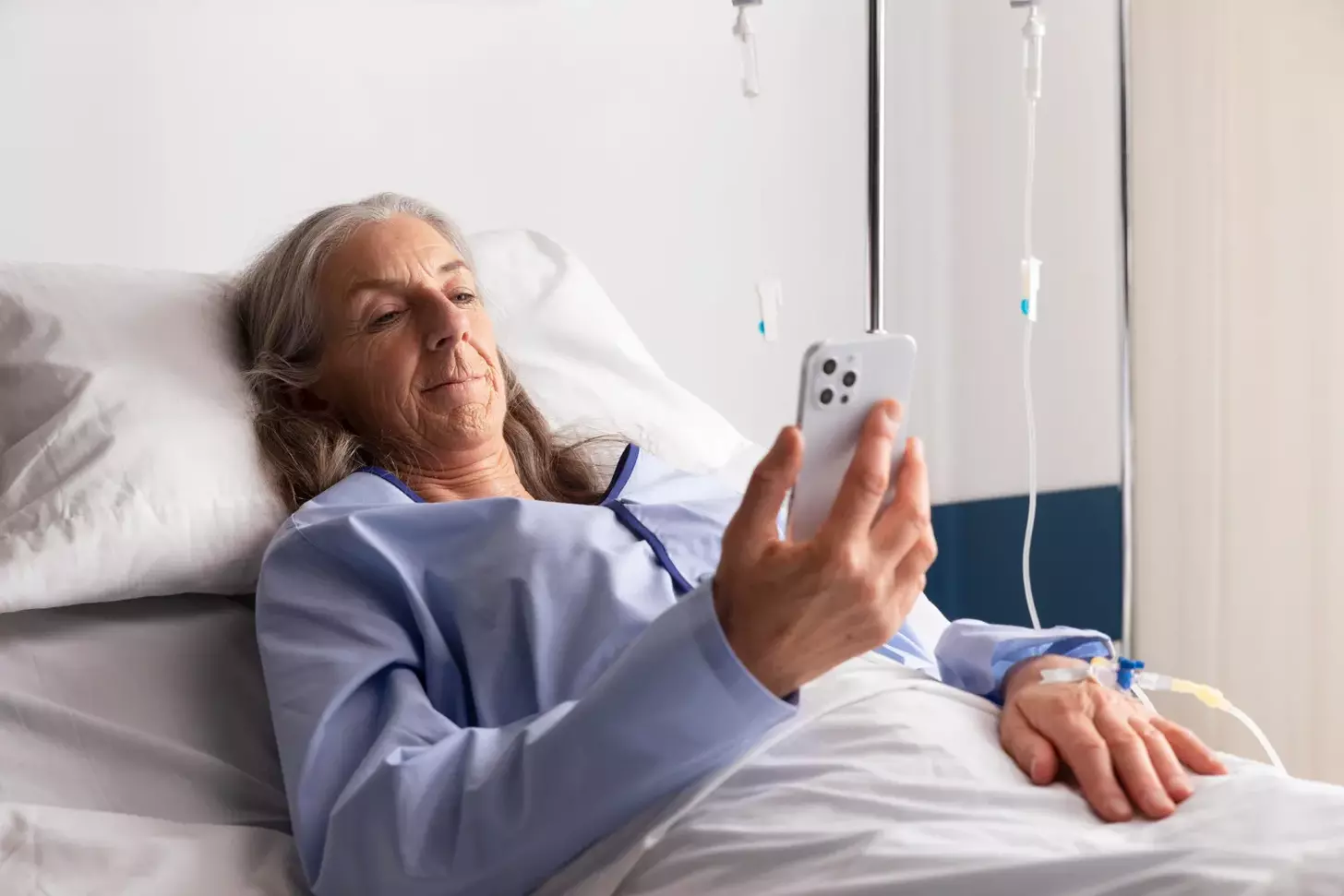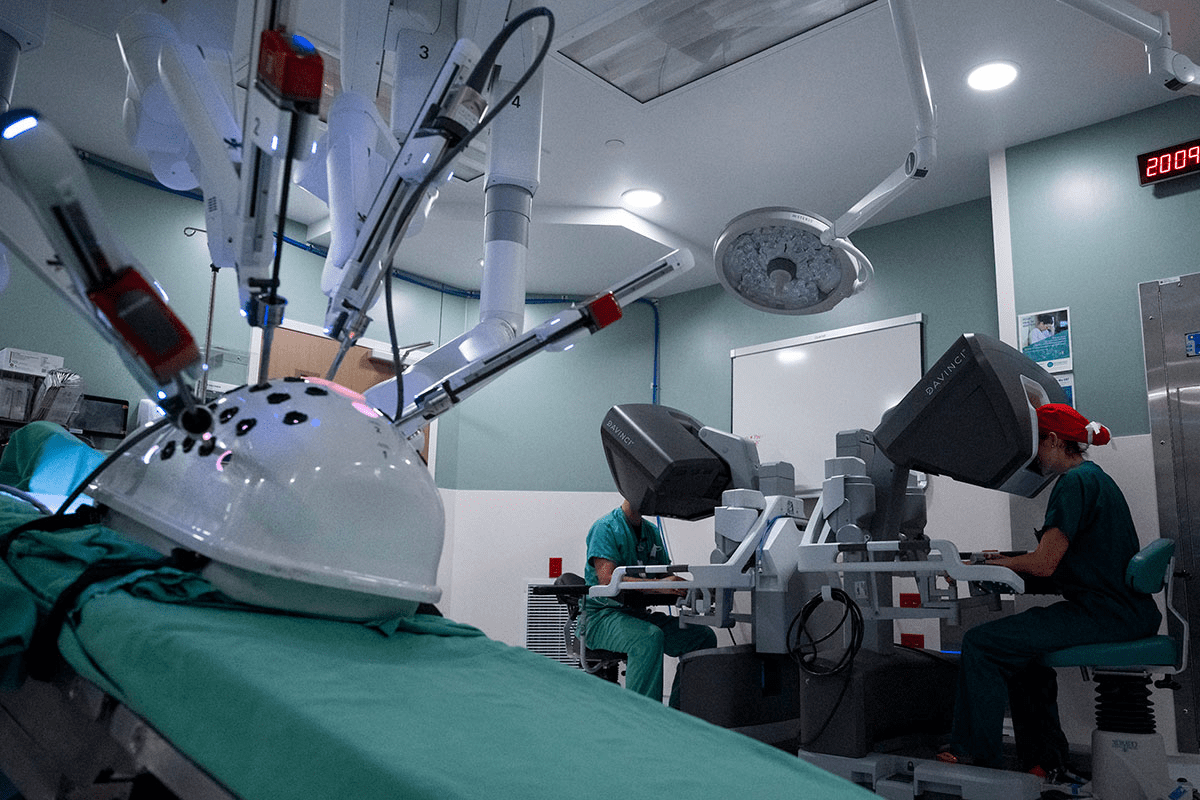Last Updated on November 27, 2025 by Bilal Hasdemir
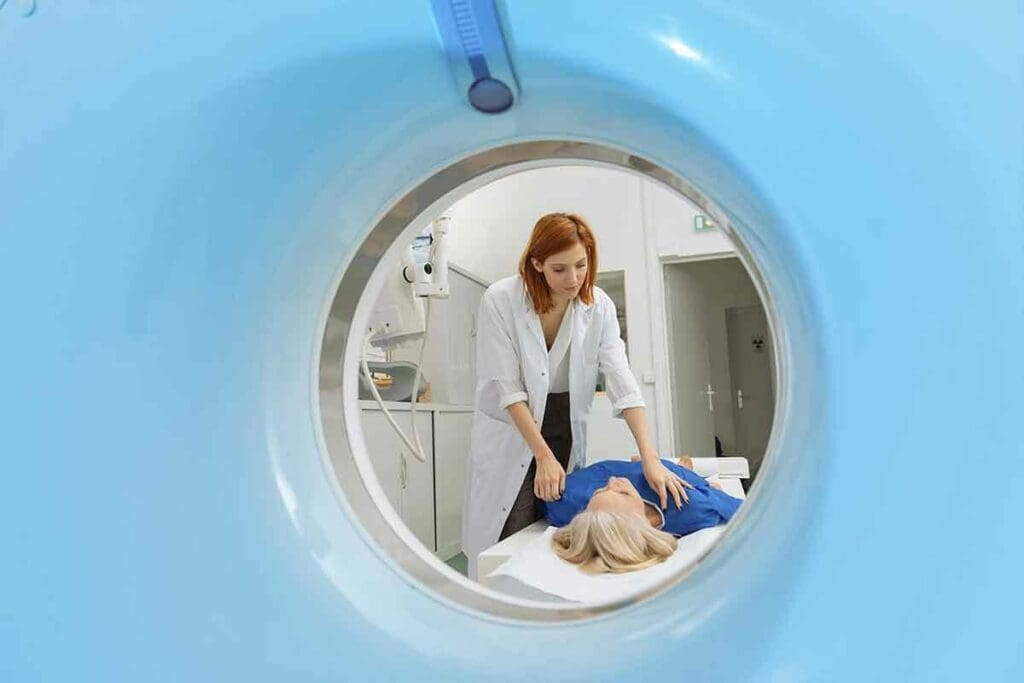
Getting radioactive iodine treatment for Graves’ disease can be scary. But knowing what might change after is key for patients.
At Liv Hospital, a top name in patient care, they use the latest methods to help. Research shows that those who get radioactive iodine therapy might feel tired a lot, have mood swings, and feel less happy with life. This is compared to other treatments.
Understanding life after radioactive iodine treatment is vital for every patient. It helps them prepare for the possible changes and make smart choices about their health. By learning about the effects of radioactive iodine treatment, people can manage their recovery better and improve their overall well-being.
Key Takeaways
- Radioactive iodine treatment can lead to significant physiological and lifestyle changes.
- Patients may experience persistent fatigue and emotional changes.
- Quality of life may be lower compared to other treatments.
- Understanding the effects of radioactive iodine treatment is key for making informed choices.
- Expert care and the latest methods can help people through their recovery.
Understanding Radioactive Iodine Treatment for Graves’ Disease
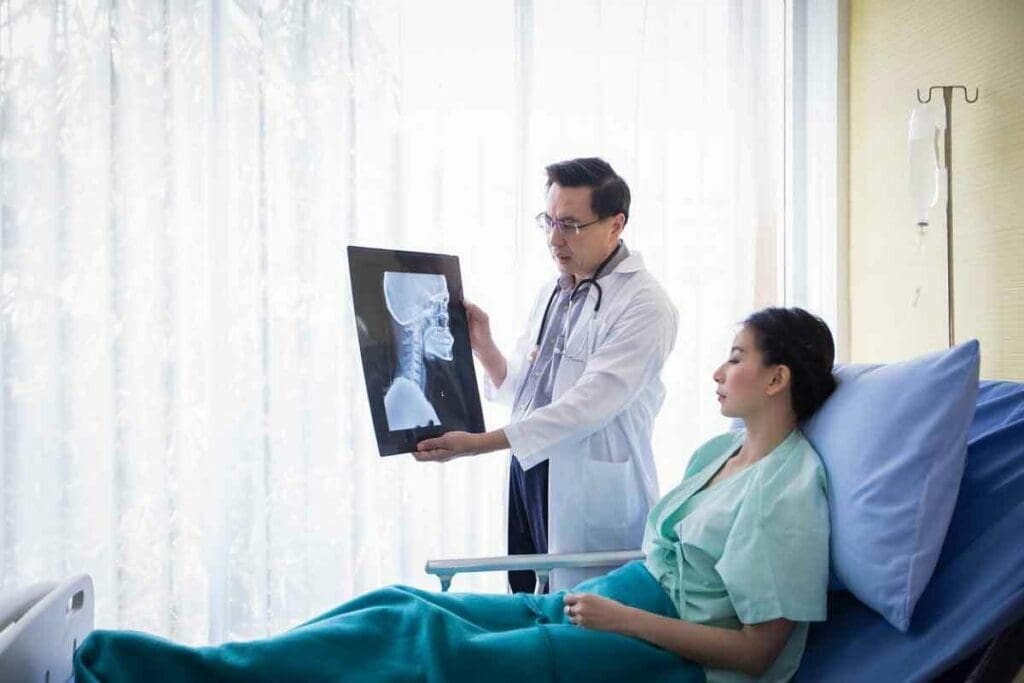
Patients with Graves’ disease often find relief in radioactive iodine (RAI) treatment. Graves’ disease is an autoimmune disorder that leads to hyperthyroidism. This is when the thyroid gland makes too many thyroid hormones. RAI treatment is a common choice because it works well and has few side effects.
What is Radioactive Iodine (RAI) Treatment?
RAI treatment uses a special form of iodine, I-131, which you swallow. It’s in capsule or liquid form. This iodine goes to the thyroid gland and kills thyroid cells, lowering hormone production.
The process is easy and doesn’t involve surgery. It’s a good choice for those who don’t want surgery or long-term medication.
How RAI Works to Treat Graves’ Disease
When you take radioactive iodine, it goes to your thyroid gland. The I-131 part of it kills thyroid cells over time. This can take weeks or months, causing hormone levels to change before they drop.
The aim is to lower thyroid hormone production to normal or below. Often, this leads to hypothyroidism, which is easier to treat with hormone replacement than hyperthyroidism.
Most people find RAI treatment effective, though some might need a second dose. Its success rate and low risk of serious side effects make it a top choice for many.
Immediate Physical Changes Following RAI Treatment
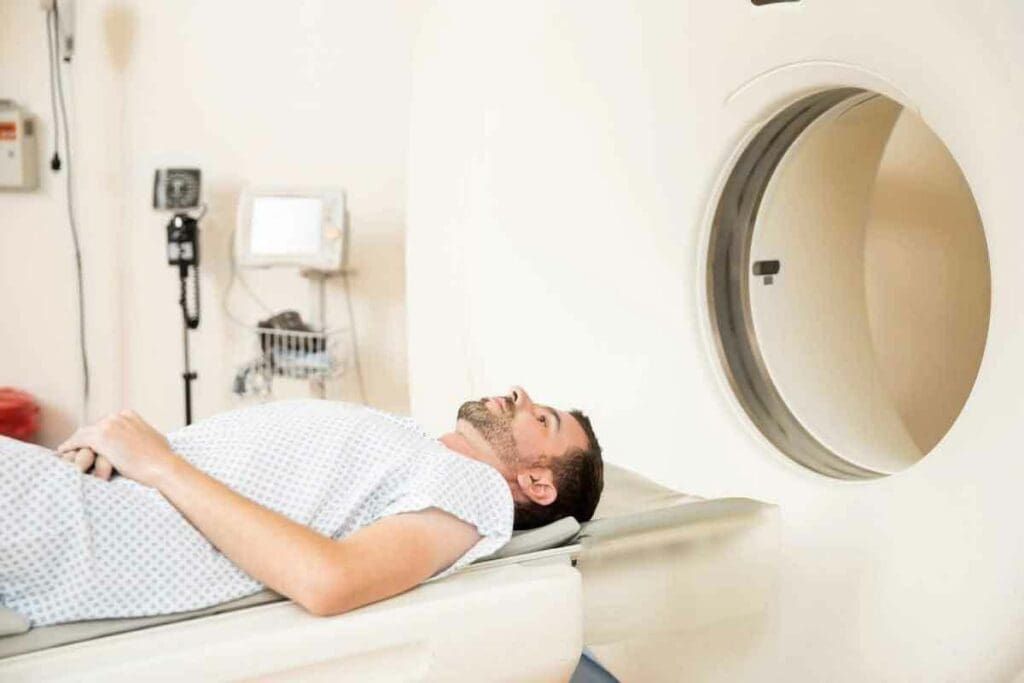
People treated with Radioactive Iodine for Graves’ disease often see physical changes right away. It’s important to know about these changes. This helps manage expectations and navigate the recovery period well.
First Few Weeks After Treatment
Right after RAI treatment, patients might feel tired, have neck pain, and dry mouth. These symptoms come from the radioactive iodine affecting the thyroid and nearby tissues.
Fatigue can be really tough, as the body needs time to get its energy back. It’s key for patients to rest well and drink lots of water during this time.
Managing Initial Side Effects
Dealing with RAI treatment side effects needs a mix of self-care and sometimes medical help. For example, sucking on sugar-free candies or drinking lots of water can ease dry mouth.
- Resting when needed to combat fatigue
- Using pain relief medication for neck tenderness, under medical guidance
- Staying hydrated to help the body recover
Radiation Safety Precautions
After RAI treatment, patients must follow radiation safety precautions to protect others. This includes:
| Precaution | Description |
| Avoid close contact with others | Keep a distance from others, like children and pregnant women, for a few days after treatment. |
| Use separate utensils and towels | This prevents radiation exposure to others through shared items. |
| Flush toilet twice after use | This reduces radioactive waste in the sewage system. |
Following these guidelines helps patients lower the risk of radiation exposure to others. It makes the recovery process safer.
Transition from Hyperthyroidism to New Thyroid States
The time after RAI treatment is key. It’s when the body moves from being hyperthyroid to a new thyroid state. Patients might see their symptoms get better or turn into hypothyroidism.
Resolution of Hyperthyroid Symptoms
RAI treatment starts to lessen hyperthyroid symptoms right away. Patients often feel better as the treatment works. They might notice less palpitations, tremors, and feeling too hot.
“The symptoms of hyperthyroidism usually start to get better a few weeks to months after RAI treatment,” says as noted by an endocrinologist. This happens because the thyroid gland can’t make as many thyroid hormones.
Development of Hypothyroidism
Many people develop hypothyroidism after RAI treatment. This is because the radioactive iodine damages the thyroid gland. It can’t make enough thyroid hormones, leading to hypothyroidism.
Hypothyroidism means you need to take thyroid hormone replacement therapy for life. A study in the Journal of Clinical Endocrinology and Metabolism found that many patients need levothyroxine therapy.
Patients should be ready for hypothyroidism and the need for ongoing care.
The Euthyroid Outcome
Some people might get a euthyroid state after RAI treatment. This means their thyroid gland works just right. But this is not as common as hypothyroidism.
The chance of getting a euthyroid state depends on the RAI dose and the thyroid gland’s characteristics. Regular monitoring is key to see how the thyroid is doing after RAI treatment. It helps adjust treatment if needed.
Life After Radioactive Iodine Treatment: Hormone Replacement Therapy
After radioactive iodine (RAI) treatment for Graves’ disease, many patients need a new way to manage their thyroid health. This often involves hormone replacement therapy. This change is needed because RAI treatment can cause hypothyroidism. This is when the thyroid gland doesn’t make enough thyroid hormones.
Starting Levothyroxine Therapy
Levothyroxine is a synthetic thyroid hormone called thyroxine (T4). It’s often given to patients with hypothyroidism after RAI treatment. The goal is to get thyroid hormone levels back to normal. This helps with symptoms like fatigue, weight gain, and dry skin.
When starting levothyroxine, patients usually start with a dose based on their weight and medical history. It’s important to have regular blood tests. These tests help adjust the dosage as needed.
Finding the Right Dosage
Finding the right dose of levothyroxine can take some time. It might take a few tries and blood tests to find the right amount. This amount keeps thyroid hormone levels in a normal range.
- Regular monitoring helps in adjusting the dosage.
- Factors such as age, weight, and other medical conditions can influence the required dosage.
- Patients are advised to take levothyroxine on an empty stomach, typically in the morning, to ensure optimal absorption.
Lifelong Management Considerations
Hormone replacement therapy with levothyroxine is usually needed for life after RAI treatment. It involves regular check-ups with healthcare providers. These check-ups help monitor thyroid hormone levels and adjust the dosage as needed.
Patients should also know about possible interactions between levothyroxine and other medications or supplements. Some medications can affect how well levothyroxine is absorbed. This might mean changing the dosage or when to take it.
By understanding the importance of hormone replacement therapy and following a treatment plan, patients can live healthy lives after RAI treatment.
Do You STILL Have Graves’ Disease After Radioactive Iodine Treatment?
For those with Graves’ disease, radioactive iodine treatment might offer a cure. But what does ‘cure’ really mean? This treatment aims to destroy part or all of the thyroid gland. This reduces thyroid hormone production to normal or below.
Remission vs. Cure
The terms “remission” and “cure” are often mixed up but they’re different. Remission means symptoms lessen or go away for a while. A cure means the disease is gone for good and won’t come back.
RAI treatment can lead to remission by lowering thyroid hormone production. But, is it a cure? A leading endocrinologist says, “RAI is not a cure in the traditional sense. It doesn’t fix the autoimmune cause of Graves’ disease.”
“The goal of RAI treatment is to achieve a hypothyroid state, which is then managed with thyroid hormone replacement therapy.”
Autoimmune Aspects That May Persist
Even after RAI treatment, some autoimmune parts of Graves’ disease might stay. This is because RAI mainly targets the thyroid gland, not the autoimmune process.
| Autoimmune Aspect | Description | Post-RAI Treatment Status |
| Thyroid Eye Disease | An autoimmune condition affecting the tissues around the eye | May persist or worsen |
| Thyroid Stimulating Immunoglobulins | Antibodies that stimulate the thyroid gland | May remain present |
| Other Autoimmune Symptoms | Various symptoms related to the autoimmune nature of Graves’ | Can vary in severity and presence |
Monitoring for Recurrence
Even though RAI treatment lowers the chance of Graves’ disease coming back, watching for it is key. Regular check-ups with doctors are needed to manage hypothyroidism and watch for signs of the disease coming back.
Patients should understand that certain symptoms may persist, making continuous care essential. Experts suggest that long-term follow-up is key for managing RAI treatment’s effects and ensuring the best outcomes for patients.
Changes in Quality of Life After RAI
Life after RAI treatment for Graves’ disease brings many changes. Patients move from being hyperthyroid to either hypothyroid or euthyroid. This change affects their physical, emotional, and psychological well-being.
Physical Well-being Changes
After RAI treatment, patients often notice physical changes. These include:
- Fatigue and lethargy as the body adjusts to new thyroid hormone levels
- Weight changes that may need diet and exercise adjustments
- Changes in skin, hair, and nail health as thyroid hormone levels stabilize
These physical changes can greatly affect a patient’s daily life and overall well-being.
Emotional and Psychological Adjustments
Emotional and psychological adjustments after RAI treatment are significant. Patients may experience:
- Mood swings as hormone levels fluctuate
- Anxiety or depression related to the change in thyroid status and the psychological impact of having a chronic condition
- Adjustments to their sense of identity and self-image as they adapt to their new health status
Support from healthcare providers, family, and friends is key during this time.
Comparing Quality of Life with Other Treatment Options
Studies have compared the quality of life outcomes for patients undergoing RAI treatment with those receiving other treatments for Graves’ disease. A comparison of quality of life changes is presented in the following table:
| Treatment Option | Physical Well-being | Emotional/Psychological Impact | Overall Quality of Life |
| RAI Treatment | Significant changes, often requiring hormone replacement therapy | Potential for mood swings, anxiety, and depression | Variable, with some studies indicating lower quality of life years after treatment |
| Surgery | Immediate removal of the thyroid gland, potentially leading to hypothyroidism | Stress and anxiety related to surgery, potentially for complications | Generally good, but dependent on successful hormone replacement therapy |
| Antithyroid Medications | Fewer long-term physical changes compared to RAI or surgery | Potential for side effects and the need for long-term medication adherence | Can be good, with fewer long-term impacts on quality of life |
Understanding these comparisons can help patients and healthcare providers make informed decisions about treatment options.
Long-Term Side Effects of Radioactive Iodine Treatment
Radioactive iodine treatment is a common solution for Graves’ disease. But, it’s important for patients to know about the long-term health effects. This treatment can have lasting impacts on one’s health.
Common Persistent Symptoms
Some people may face ongoing symptoms after treatment. These include fatigue, dry mouth, and neck tenderness. These symptoms can affect daily life in different ways.
Here’s some data on these symptoms:
| Symptom | Prevalence |
| Fatigue | 40% |
| Dry Mouth | 25% |
| Neck Tenderness | 30% |
Rare but Serious Complications
While rare, serious complications can occur. These include a higher risk of thyroid cancer and other cancers. There can also be effects on the salivary glands and tear ducts.
It’s vital for patients to talk to their healthcare provider about these risks. This way, they can understand the long-term effects.
Managing Chronic Effects
Managing chronic effects requires a team effort. Regular check-ups with the healthcare provider are key. This helps monitor thyroid function and address new issues.
Levothyroxine therapy is often used to treat hypothyroidism. Patients may also need to make lifestyle changes. This can help with symptoms like fatigue and dry mouth.
By knowing the long-term side effects and working with healthcare providers, patients can manage their condition. This improves their quality of life.
Can Your Thyroid Grow Back After Radioactive Iodine?
Many patients wonder if their thyroid gland can regrow after radioactive iodine treatment. Radioactive iodine (RAI) therapy is used to treat Graves’ disease. It aims to reduce thyroid hormone production by destroying part or all of the gland. Though RAI is effective, some worry about thyroid regrowth.
Likelihood of Thyroid Tissue Regeneration
Thyroid tissue regeneration after RAI treatment is rare. Studies show that in some cases, the gland can partially regrow. The extent of regrowth depends on the dose of radioactive iodine used.
Research suggests that lower doses of RAI lead to more regrowth. Yet, significant regrowth that causes hyperthyroidism is rare. For more information, visit this resource.
Signs of Thyroid Regrowth
Signs of thyroid regrowth include weight loss, palpitations, and increased appetite. Patients should watch for these symptoms and report any changes to their doctor. Regular thyroid function tests help detect regrowth early.
Key signs to watch for are:
- Recurrence of hyperthyroid symptoms
- Changes in thyroid hormone levels
- Enlargement of the thyroid gland
When Additional Treatment May Be Needed
If thyroid regrowth happens, more treatment might be needed. This could include more RAI therapy, medication, or surgery. The choice depends on how much regrowth there is and how severe symptoms are.
It’s vital for patients to stay in close contact with their healthcare provider. Regular check-ups help manage regrowth effectively. As one expert says, “Early detection and timely intervention are key to managing thyroid regrowth.”
In summary, thyroid regrowth after radioactive iodine is rare. Patients should know the signs and follow up regularly with their healthcare provider. This ensures timely action if regrowth occurs.
Graves’ Disease Life Expectancy After RAI
People with Graves’ disease often ask if RAI treatment affects their life expectancy. Radioactive Iodine (RAI) is a common treatment for Graves’ disease. Yet, many worry about its long-term effects on life expectancy.
Statistical Outcomes for Life Expectancy
Research shows RAI treatment doesn’t greatly change life expectancy for most Graves’ disease patients. Studies say the life expectancy of those treated with RAI is similar to the general population. A study in the Journal of Clinical Endocrinology and Metabolism found long-term survival rates are the same.
Important statistics include:
- Survival rates: Patients treated with RAI have survival rates similar to those without the condition.
- Long-term health outcomes: RAI treatment does not significantly increase mortality, research shows.
Cardiovascular and Cancer Risk Factors
While RAI treatment is generally safe, there are risks to consider. These risks are mainly related to heart health and cancer.
Important points to remember:
- Cardiovascular risks: Untreated hyperthyroidism can cause heart problems. RAI treatment helps by balancing thyroid hormones.
- Cancer risks: There’s concern about a link between RAI treatment and cancer. But studies show the risk is very low.
Does Radioactive Iodine Shorten Your Life?
Medical experts agree that RAI treatment does not shorten life expectancy. In fact, it can improve health outcomes and lower risks of complications from untreated hyperthyroidism.
Key takeaways:
- RAI treatment is safe and effective for managing Graves’ disease.
- Life expectancy after RAI treatment is usually the same as the general population.
- While there are risks, they don’t greatly affect life expectancy.
The Controversy: Thyroid Cancer and Graves’ Disease Ten Years Later
Recent studies have sparked a debate about radioactive iodine treatment and thyroid cancer in Graves’ disease patients. This debate is important for those who have had this treatment and worry about their health risks.
Evolving Research Perspectives
Research on radioactive iodine treatment and thyroid cancer shows mixed results. Some studies suggest a higher risk of thyroid cancer after treatment. Others find no link. This ongoing research means patients and doctors need to keep up with new findings.
Key findings from recent studies include:
- A possible higher risk of thyroid cancer with high doses of radioactive iodine.
- The need for long-term follow-up after radioactive iodine treatment.
- The need for more research to understand the link between treatment and cancer risk.
Long-term Monitoring Recommendations
Long-term monitoring is key for those who have had radioactive iodine treatment for Graves’ disease. Regular check-ups and tests are important to catch any problems early.
Recommended monitoring strategies include:
- Annual thyroid function tests to keep hormone levels normal.
- Periodic ultrasound exams to watch for thyroid gland changes.
- Quick evaluation of any new symptoms that might indicate thyroid or other health issues.
Balancing Treatment Benefits and Risks
Radioactive iodine treatment has risks, but it also helps many Graves’ disease patients. The choice to have this treatment should be made after weighing the benefits and risks with a healthcare provider.
Understanding the controversy helps patients make informed decisions about their care. It also encourages them to monitor their health over time.
Conclusion: Embracing Your New Normal
After radioactive iodine treatment for Graves’ disease, many wonder about the future. It’s important to understand what life after treatment is like. With the right care, you can live an active and fulfilling life.
The change from being hyperthyroid to a new thyroid state is big. You might need hormone replacement therapy. It’s also key to check your hormone levels often to get the right amount. Graves’ disease doesn’t usually affect how long you live after RAI treatment. But, it’s important to watch for any long-term side effects and check for any return of the disease.
By accepting this new normal, you can take back control of your health. Working closely with your healthcare team is vital. With their support, you can enjoy a great quality of life after treatment.
FAQ
Do you have Graves’ disease after radioactive iodine treatment?
Radioactive iodine can destroy the thyroid gland. But it might not cure Graves’ disease. The disease’s autoimmune parts can stay, so it’s key to keep an eye out for it coming back.
What are the long-term side effects of radioactive iodine treatment?
You might feel hypothyroidism, dry mouth, and taste changes for a long time. Rare but serious issues like thyroid storm or radiation exposure to others can happen. Getting ongoing medical care is important to manage these effects.
Can your thyroid grow back after radioactive iodine treatment?
It’s unlikely but possible for the thyroid to grow back. Signs of this include changes in hormone levels or symptoms of hyperthyroidism coming back. If it does, you might need more treatment.
Does radioactive iodine shorten your life?
Studies show radioactive iodine treatment doesn’t shorten your life span. But, it’s important to watch for heart and cancer risks. These can affect your health and how long you live.
What is life like after radioactive iodine treatment for Graves’ disease?
After RAI treatment, you’ll need to adjust to a new life. This might include hormone therapy, managing side effects, and watching for the disease to come back. With the right care and lifestyle changes, you can improve your quality of life.
How long can you live with Graves’ disease?
With the right treatment, like radioactive iodine, many people with Graves’ disease can live active lives. It doesn’t usually shorten your life span. But, you’ll need to keep seeing doctors to manage the disease.
What are the benefits and risks of radioactive iodine treatment for Graves’ disease?
RAI treatment can manage hyperthyroidism well and is relatively easy. But, it can cause long-term side effects like hypothyroidism. You’ll also need to take hormones for life.
Is there a link between thyroid cancer and Graves’ disease?
Some studies suggest a link between thyroid cancer and Graves’ disease. But, the exact connection is not fully understood. It’s important for people with Graves’ disease to get regular check-ups.
How does radioactive iodine treatment affect quality of life?
RAI treatment can change your life in many ways. It can help manage hyperthyroidism but might also cause hypothyroidism and other issues. Managing these effects is key to a good quality of life.
References
- Shim, S. R., Zaydfudim, V., Sosa, J. A., & et al. (2021). Cancer risk after radioactive iodine treatment for hyperthyroidism: a systematic review and meta-analysis. Journal of Endocrinological Investigation / https://www.ncbi.nlm.nih.gov/pmc/articles/PMC8449277/


